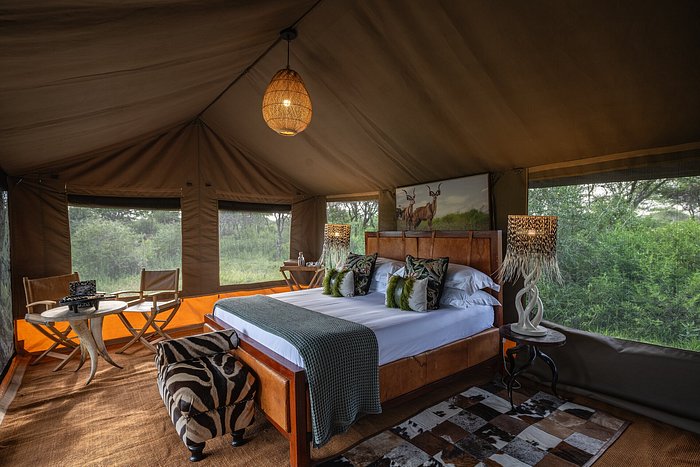Ndarakwai Camp
Ndarakwai Ranch, named by the Maasai after an indigenous species of cedar tree, was farmed and ranched by Europeans when Tanganyika was a German Colony. The ranch saw significant action during WW1 and trenches can still be seen on many hills on the farm. After WW1 Tanganyika became a British Protectorate and was ranched through to Independence in 1961, and well into the 70’s. Tanganyika was re-named Tanzania after the Zanzibar Revolution in 1964. Ndarakwai was one of a number of “West Kili” farms that were nationalized in the mid ‘70’s and allocated to various Government Parastatal organisations. Between then and 1994, unregulated grazing, tree cutting and rampant poaching all but destroyed the fragile grasslands and drove out the elephant and other wildlife populations. The area was fast becoming a waste-land. In 1995, Peter Jones (owner of Tanganyika Film & Safari Outfitters) took on board the commitment to restore the rangeland with the long-term hope that wildlife populations
would rebound. At the time this was considered a bold experiment (a foolhardy gamble by some) in self-sustaining conservation and unique in Tanzania. The impacts of his consistent efforts have been profound. With trees and vegetation protected, there is now less run-off after the rains, the water table has risen and grass resources improved. Removing the large herds of cattle allowed the grasslands to flourish, and there has been an increase in the variety of grass species now found on the Ranch. Due to these changes, wildlife has moved back onto Ndarakwai. Today, elephant, zebra, eland, giraffe, wildebeest, buffalo, lesser kudu, mountain reedbuck and bush buck are just a few of the animals that call Ndarakwai home. This privately owned ranch preserves a variety of habitats that are now home to over 70 mammal species, and 300 bird species to date. It is also an important part of the Amboseli / Ngasurai Eco-system and helps preserve seasonal elephant routes.







